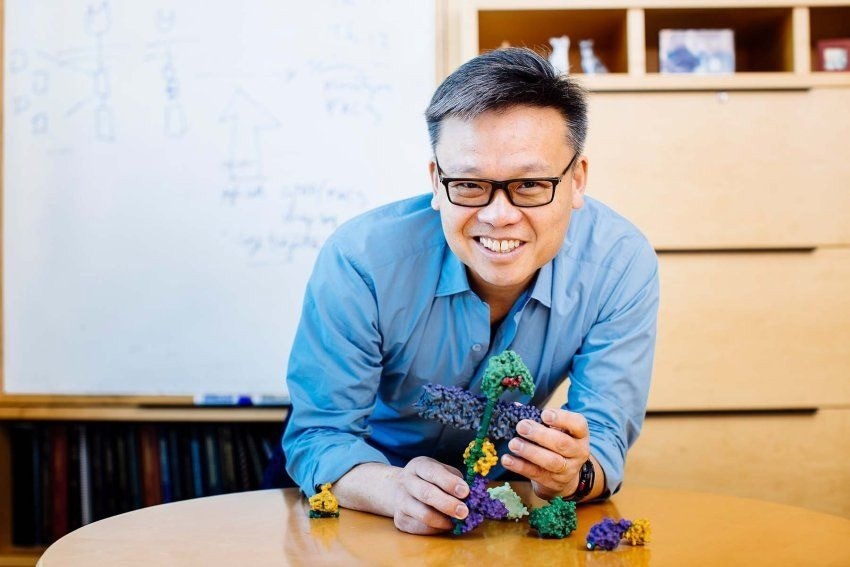Scientists at UC San Francisco have created molecules that function as “cellular glue,” enabling them to precisely control how cells adhere to one another. The discovery is a significant step toward regenerative medicine’s long-term goal of creating new tissues and organs.
 Wendell Lim, PhD, director of UCSF’s Cell Design Institute, holds a cellular model in his office at UCSF’s Mission Bay Campus. Image Credit: Elena Zhukova
Wendell Lim, PhD, director of UCSF’s Cell Design Institute, holds a cellular model in his office at UCSF’s Mission Bay Campus. Image Credit: Elena Zhukova
The body naturally contains adhesive molecules that hold the tens of trillions of cells together in intricate patterns. They build neural circuits, form structures, and direct immune cells toward their intended targets. To maintain the body’s ability to function as a self-regulating whole, adhesion also makes cell communication easier.
In a recent study, customized adhesion molecules were engineered into cells that bound with specific partner cells in predictable ways to form complex multicellular ensembles. The findings were published in the issue of Nature on December 12th, 2022.
We were able to engineer cells in a manner that allows us to control which cells they interact with, and also to control the nature of that interaction. This opens the door to building novel structures like tissues and organs.”
Wendell Lim, PhD, Study Senior Author and Byers Distinguished Professor, Cellular and Molecular Pharmacology, University of California San Francisco
Regenerating connections between cells
Body organs and tissues start to develop in utero and continue to do so throughout childhood. Many of the molecular instructions that control these generative processes by adulthood have vanished, and some tissues, like nerves, are incapable of recovering from damage or illness.
By creating new connections between adult cells, Lim hopes to overcome this. However, to achieve this, one must be able to precisely engineer how cells communicate with one another.
The properties of a tissue, like your skin for example, are determined in large part by how the different cells are organized within it. We are devising ways to control this organization of cells, which is central to being able to synthesize tissues with the properties we want them to have.”
Adam Stevens, PhD, Study First Author and Hartz Fellow, Cell Design Institute, University of California San Francisco
The degree to which a tissue’s cells are bonded together determines much of what distinguishes it. Many of the cells in solid organs like the liver or lungs will have very tight bonds between them.
Nevertheless, in the immune system, weaker bonds allow the cells to move through blood vessels or squeeze between the tightly packed cells of skin or organ tissues to bind a pathogen or a wound.
The two parts of the researchers’ adhesion molecules were designed to control that aspect of cell bonding. On the outside of the cell, a portion of the molecule functions as a receptor and chooses which other cells it will interact with.
The strength of the bond that forms is tuned by a second component located inside the cell. The two factors are interchangeable in a modular way to produce a variety of specialized cells that bond in various ways across a range of cell types.
The code underlying cellular assembly
Stevens claimed that these discoveries also have other uses. For instance, to make it simpler to study disease states in human tissue, researchers could design tissues to model disease states.
Custom adhesion molecules may help us understand the origins of the transition from single to multicellular organisms more fully because cell adhesion was a crucial step in the evolution of animals and other multicellular organisms.
“It is very exciting that we now understand much more about how evolution may have started building bodies. Our work reveals a flexible molecular adhesion code that determines which cells will interact, and in what way. Now that we are starting to understand it, we can harness this code to direct how cells assemble into tissues and organs. These tools could be really transformative,” Stevens added.
Source:
Journal reference:
Stevens, A. J., et al. (2022). Programming Multicellular Assembly with Synthetic Cell Adhesion Molecules. Nature. doi.org/10.1038/s41586-022-05622-z